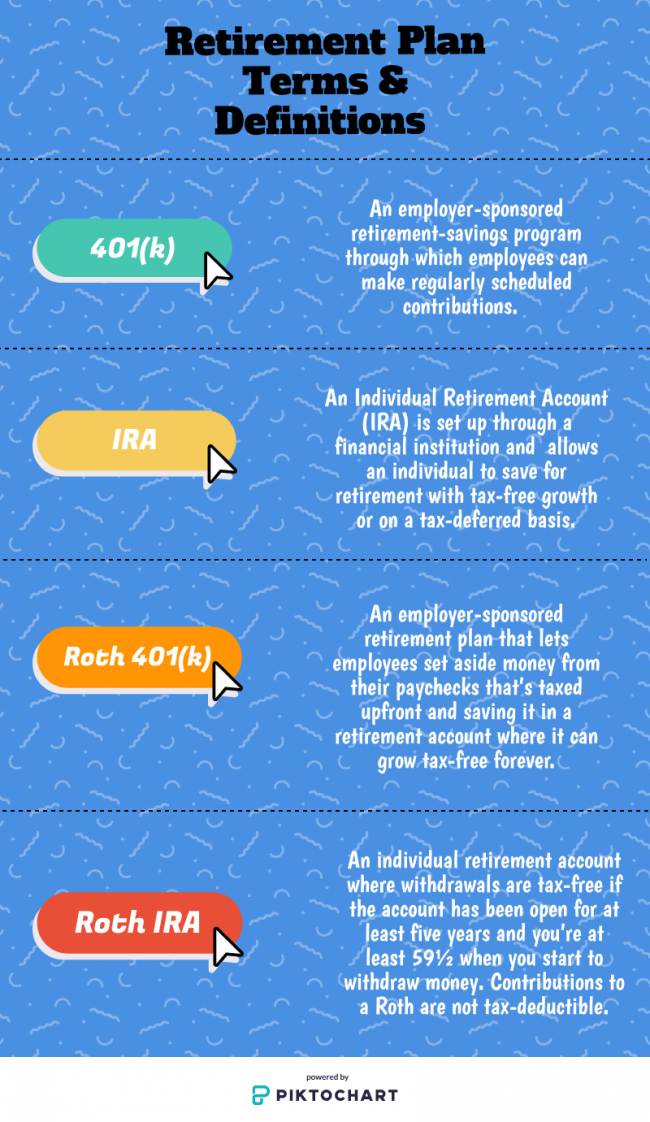Omar Khalil, a 24-year-old accountancy major, doesn’t have a retirement plan and doesn’t plan on having one. He would “rather invest all my money on something today, rather than sit on a bunch of money for 20 years,” Khalil said.
A new report by the National Institute on Retirement Security (NIRS) concluded that 66 percent of working millennials have nothing saved for retirement.
Due to an absence of financial literacy, a tumultuous economy, and complex investment options, millennials are at risk of poor retirement planning.
“For someone who is 20 years old, saving for retirement is a hit or miss,” Dr. Inga Chira, director of the financial planning program said. “I do think it is important but there are other things a student might need to do first: save for an emergency fund, build a life, and balance student loans.”

Employer-sponsored retirement plans such as the 401(k) and Roth 401(k), have two major requirements that create a gap in enrollment: employees must work a minimum of 40 hours per week and remain employed for a full calendar year to be eligible.
The report by the NIRS found that 83 percent of working Latinos in this generation have nothing saved for retirement due to eligibility requirements. However, the Unidos Policy Action Center finds nine out of 10 eligible Latino millennials are enrolled in a retirement plan.
Ileana Rodriguez, a 26-year-old sociology major, has not explored retirement plans because of her immigration status.
“Not being a legal U.S. citizen has stopped me from looking into retirement plans,” Rodriguez said. “I don’t know if I would be eligible.”
In a traditional 401(k), an employee contributes a pre-tax percentage of their pay to a retirement savings plan and some employers will match each contribution, but penalties may apply if withdrawals are made before the retirement age defined in the plan.
A Roth 401(k) is a post-tax contribution plan and early withdrawals of employee-made contributions are penalty free, but penalties could be charged on the interest portion.
Millennials are at a greater risk than previous generations and should start saving, according to the NIRS report. “The millennial generation has faced a harsh economiclandscape of depressed wages, high unemployment, and major structural changes in the American economy,” the report states. “Millennials will have to save more than earlier generations and their parents to address their unique retirement challenges.”
Traditional retirement plans have been highly criticized in recent years for being outdated and too complex for the average citizen, “Some employees have 10 options and others may have 100 options. An average employee has no idea how to allocate their investment choices,” Chira said. “There is some research showing that an average employee spends less than one hour on allocation. I know how to do it and I spend 20-30 hours on the options and choices.”
Chira advises her students on the importance of saving money and monitoring expenses at a young age, “I tell people to choose one day of the week and make it a ‘no spend day,’ make sure you get gas and groceries on a different day,” she said.
Andrew Tannous, the president of the Student Finance Association on campus believes it is important for students to learn more about personal finance.
“What I want to advocate for is not frantic and immediate saving, however, I advocate for students to seek education on personal finance,” Tannous said.
CSUN offers an upper division personal finance course to help students plan for their financial future. Tannous suggests researching retirement options, “Find out how much money you will need to retire from a free resource online. This will put into perspective the large amount of planning, savings, and investing that will be required to retire at a target age,” Tannous said.
Millennials may be at risk if they don’t save for retirement but without a complete overhaul of current retirement plan structures, future generations will continue to widen the gap in enrollment.
“Retirement planning is part of a long-term strategic plan that prepares someone for exiting the workforce,” Tannous said. “The ability for a student to educate themselves on how much they will need for retirement will tell a student when they will need to start saving and empower them to face this challenge.”











